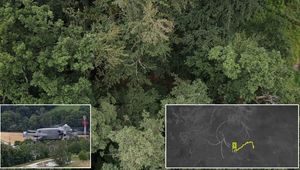Unprecedented Quality: The JKU Uses AI to Penetrate Foliage and Detect Concealed Objects
New AI technology developed at the JKU facilitates video recordings of obscured objects, rendering them in unprecedented detail.

To date, image data has been captured at different wavelengths using state-of-the-art technology to support application-specific measurements, creating the foundation of present-day remote sensing technology by satellites, aircraft, and drones.
Alongside the visible spectrum, the near infrared spectrum is also used to, for example, gauge the vegetation's condition, while the far infrared spectrum is used to detect heat sources. Conventional multispectral images, for instance, struggle to detect objects obscured by a forest’s canopy.
Breakthrough Thanks to Technology Developed at the JKU
Airborne Optical Sectioning (AOS), a scanning method developed at the JKU in 2018, combines many individual images to calculate away occlusions in real time, thereby revealing objects that would otherwise be concealed under dense vegetation. AOS has already demonstrated its potential and capabilities in searches for missing persons, observing wildlife, detecting forest fires, and in archaeology.
Be it standard, single images, or occlusion-free AOS images, the multispectral image data contain very different, and often important, pieces of information. Whereas standard images in the visible spectrum can provide a local reference by means of identifiable woodland vegetation, obscured objects beneath the forest canopy are not visible. Prof. Oliver Bimber (JKU Institute of Computer Graphics) explains: "The data in different spectral bands, such as thermal imaging or near-infrared, also provide different information and using simple image processing to identify image data would result in suppressing, or, in a worst-case scenario, losing, key information." Prof. Bimber and his team have now successfully managed to combine the key information contained in these channels into a single image and without any significant data loss.
The new AI process answers the question as to what kind of information is most important. In terms of today’s technology and on an international scale, the resulting image fusion is considered to be more powerful, offering a broad range of potential applications.
The image below illustrates applying the new method to different image channels and domains, such as search and rescue, detecting and monitoring forest fires, and observing and counting the breeding heron populations.
News

 Go to JKU Homepage
Go to JKU Homepage








![[Translate to Englisch:]](/fileadmin/_processed_/a/5/csm_Kameradrohne_Credit_IGC_JKU_7bed724976.jpg)


